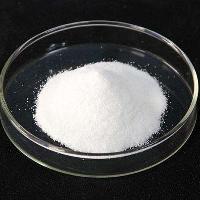-
Categories
-
Pharmaceutical Intermediates
-
Active Pharmaceutical Ingredients
-
Food Additives
- Industrial Coatings
- Agrochemicals
- Dyes and Pigments
- Surfactant
- Flavors and Fragrances
- Chemical Reagents
- Catalyst and Auxiliary
- Natural Products
- Inorganic Chemistry
-
Organic Chemistry
-
Biochemical Engineering
- Analytical Chemistry
- Cosmetic Ingredient
-
Pharmaceutical Intermediates
Promotion
ECHEMI Mall
Wholesale
Weekly Price
Exhibition
News
-
Trade Service
This article is the original of Translational Medicine Network, please indicate the source of reprinting
Written by Lily
Summary: On the morning of October 13, the New England Journal of Medicine, a top international medical academic journal, released clinical research results
on stroke treatment.
The research paper is titled: Trial of Endovascular Treatment of Acute Basilar-Artery Occlusion
。 This study conducted a prospective, multicenter, randomized controlled study on the efficacy and safety of arterial embolectomy in the treatment of acute basilar artery occlusion, and the results showed that patients with acute basilar artery occlusion could benefit from arterial embolectomy within 12 hours of onset.
Compared with the best medical treatment, arterial thrombectomy can significantly improve the patient's ability to live independently and reduce mortality
.
The research team was led
by Hu Wei, chief physician of the Department of Neurology, The First Affiliated Hospital of the University of Science and Technology of China (Anhui Provincial Hospital), and Professor Liu Xinfeng, vice president of the First Affiliated Hospital of the University of Science and Technology of China (Anhui Provincial Hospital) and general hospital of the Eastern Theater.
Professor Qureshi of the University of Missouri Stroke Center and Professor Nogueira of Neurology and Neurosurgery at the University of Pittsburgh School of Medicine participated in the study
.
This study (ATTENTION) uses Chinese data to answer the worldwide stroke problem, which is the best treatment of acute basilar artery occlusion, which provides important enlightenment for the future research direction of acute basilar artery occlusion, and is of great significance
to stroke prevention and treatment in China and even the world.
style="box-sizing: border-box;" _msthash="251139" _msttexthash="4722666">Arterial embolectomy has a significantly better prognosis than optimal medical therapy
01
Stroke, commonly known as "stroke", is the "number one killer" endangering life and health, in China, at least 1 in every 5 deaths die of stroke
.
According to the latest China Stroke Report 2020, there are currently about 3.
94 million new strokes and 2.
19 million deaths in China every year, causing a heavy burden
on society and families.
Among all types of stroke, posterior circulation stroke accounts for about one-fifth, of which posterior circulation infarction caused by acute basilar artery occlusion tends to have a worse prognosis than anterior circulation large vessel occlusion, and the mortality and disability rates of patients are higher
.
However, due to the lack of high-quality, evidence-based medical evidence, the international medical community has not been provided with evidence to test the effectiveness and safety
of arterial embolectomy in patients with stroke due to acute basilar artery occlusion.
The ATTENTION study uses high-quality evidence-based medical evidence to prove that for acute basilar artery occlusion, the prognosis of patients in the arterial embolectomy treatment group is significantly better than that of the best drug treatment group
.
The ATTENTION study included a total of 340 patients (severe ischemic stroke caused by basilar artery occlusion, and presented within 12 hours after the onset), randomly divided into arterial thrombectomy + drug treatment group and the best drug treatment group according to the ratio of 2:1, and finally 226 people and 114 people in the control group were included in the analysis
.
The mean age of the study population was 66.
5 years, the median baseline NIHSS score (neurological deficit score) was 24 points, the median time to onset to randomization was about 5 hours, and 31% and 34% of patients in the arterial thrombectomy and control groups, respectively
, received intravenous thrombolysis.
The primary outcome set by the study was good functional status at 90 days post-treatment, defined as a modified Rankin scale score of 0 to 3 (0 for symptomatic symptoms and 3 for moderate disability).
Secondary outcomes were a modified Rankin scale score of 0 to 2 at 90 days post-treatment
.
Safety outcomes included symptomatic intracranial haemorrhage, and another safety outcome was mortality
within 90 days.
The relevant comparison results are shown in the following figure:
Image source: New England Journal of Medicine
The results of the ATTENTION study demonstrated that the proportion of patients in the acute basilar artery occlusion embolectomy group who achieved a better neurological prognosis within 90 days was significantly better than that in the optimal drug treatment group
with a modified Rankin scale (mRS) to measure the neurological recovery of patients after stroke.
There was also a significant advantage in the thrombectomy group across all secondary outcomes, with the proportion of patients in the embolectomy group having the ability to live independently within 90 days significantly better than the control group, and the benefit ratio was comparable to that of anterior circulation endovascular therapy compared with optimal medical therapy
.
In addition, the thrombectomy group showed a lower risk
of death within 90 days.
The authors conclude that in Chinese patients who have developed basilar artery stroke and present within 12 hours of the onset of basilar artery occlusion, combined with endovascular thrombectomy and optimal treatment may improve functional outcomes at 90 days, but combination therapy is associated with
intracranial hemorrhage.
Comments from collaborators
02
Professor Qureshi, University of Missouri Stroke Center: This study is a large clinical trial and has great significance
for the treatment of patients with acute ischemic stroke with basilar artery occlusion.
It is estimated that about 1 million people worldwide currently suffer from acute basilar artery occlusion; The results of this trial confirm that patients with confirmed basilar artery occlusion with moderate to severe neurological deficits who can be admitted to the hospital within 12 hours of symptom onset can benefit greatly from endovascular surgery
.
It is foreseeable that the results of this trial will change existing guidelines and may even rewrite guidelines on how to reduce mortality and disability in these very severe acute ischemic
strokes.
Professor Nogueira of Neurology and Neurosurgery, University of Pittsburgh School of Medicine: Congratulations to you all for your excellent work
in the randomized ATTENTION trial and the ATTENTION registry study.
Our data is set to revolutionize the treatment of the most insidious diseases in neuroscience
.
Patients with basilar artery occlusion now finally have access to definitive treatment
.
Through treatment, we can not only improve the quality of life of our patients, but also save lives! This is unprecedented, and even significant in therapies as effective as thrombectomy
.
The entire trial was meticulously planned – everything from
efficient subject recruitment to strong inclusion criteria to determine whether outpatients were eligible for trial inclusion.
As a result, it has changed the lives of
many stroke patients around the world.
For this, we are deeply grateful!
Resources:
style="margin-bottom: 15px;white-space: normal;box-sizing: border-box;" _msthash="251154" _msttexthash="2451358"> style="white-space: normal;box-sizing: border-box;">Note: This article is intended to introduce the progress of medical research and cannot be used as a reference
for treatment options.
If you need health guidance, please go to a regular hospital
.
Recommendations, live streams/events
October 21 14:00-17:30 Shanghai
Brain nervous system disease diagnosis and drug discovery industry salon
Scan the QR code to participate for free
Nov 01-02 09:00-17:30 Chongqing
The first Southwest Single Cell Omics Technology Application Forum
Scan the QR code to participate for free
November 25-27 09:00-17:30 Shanghai
The 4th Shanghai International Cancer Congress
Scan the code to participate







